By Rick VanSickle
In those halcyon days when Beaujolais Nouveau wines were at their apex of popularity, the third Thursday of November signalled a stampede to LCBO stores to grab an insane amount of Gamay bottled only weeks before.
They were heady days indeed, fuelled by crafty marketing led by Georges Duboeuf, who is credited as one of the geniuses behind the category of fresh and cheap Gamay, and other Beaujolais vintners eager to clear out large quantities of wine at decent profits, which would create a much-needed cash flow shortly after harvest. Wine lovers the world over bought into the hype and lined up to grab whatever they could from the hundreds and hundreds of cases piled up at the front of LCBO stores around the province.

It was by far that biggest retail wine event of the year back in the heyday of Beaujolais Nouveau wines and wine writers of the time were only too happy to do their part in convincing consumers that they needed to snag what they could before it was all gone by the end of the day.
During the height of popularity of Beaujolais Nouveau, in the late 1980s and through the 1990s, I was the editor-in-chief of the Ottawa Sun. We established a rapport with many of the LCBO product consultants in Ottawa and convinced them at the time that it was in their best interests to have the newspaper taste and rate the newly arrived Beaujolais Nouveau wines so consumers would know what they were lining up for. This was complicated at first because the wines were flown all over the world to coincide with the third Thursday of November and barely arrived in time for the release.
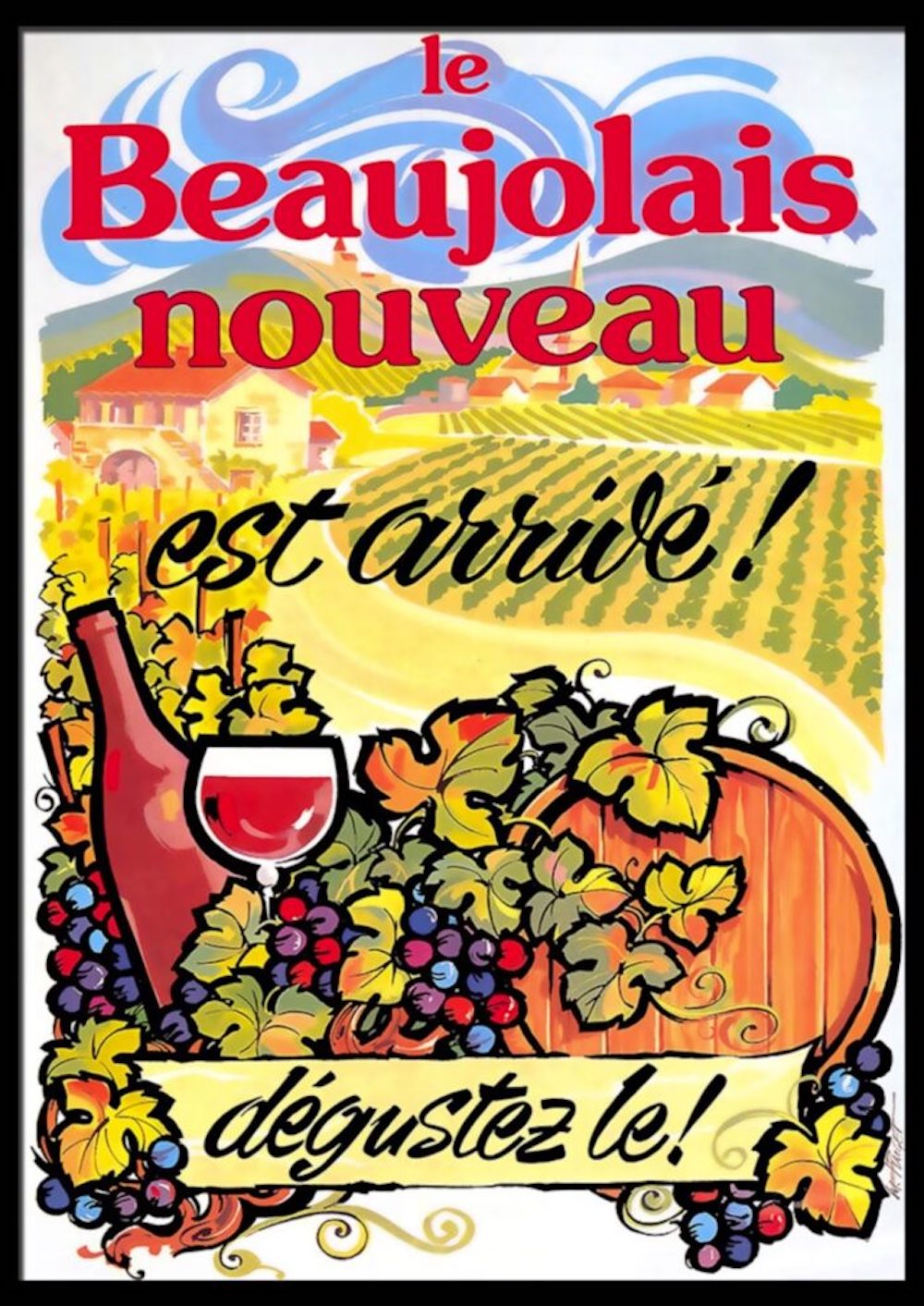
We set up a tasting panel, led by in-house wine writer Michael Botner, me, our food writer Gay Cook and select LCOB product consultants and usually a special guest or two from the community. We tasted the wines, rated them, and splashed the reviews, story, and photos over two tabloid pages on the day of the release. The Ottawa Sun was one of the first in the province to have reviews of the wines on the day of the release. This continued annually for nearly the entire decade I was in Ottawa.
It would be a couple more decades before interest began waning with Beaujolais Nouveau wines, and it would take until Nov. 17, 2022, THIS THURSDAY, that the ritual would finally come to an abrupt end, at least in Ontario and Quebec.
L-Express wine writer Pierre Ferland broke the news on Nov. 3, see story here, that the LCBO will not offer the famous primeur wine this year. “For lovers of tradition, a major change is to be expected for 2022. Since 1985, every year, when the third Thursday of November arrives, the shelves of the LCBO come alive with these famous-coloured labels to offer you the famous Beaujolais Nouveau.”
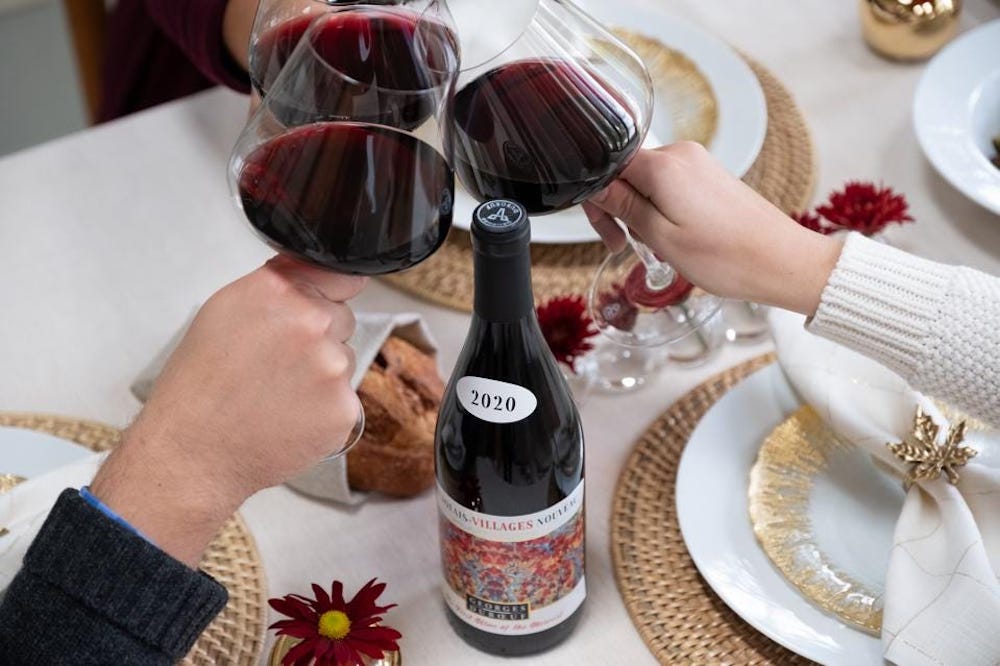
Ferland said that the turnaround time to grow, produce and distribute this wine is very tight. “So, you can imagine that the logistics for shipping in such a short time is quite a challenge. Winegrowers, merchants, and retailers (LCBO, SAQ, etc.) are not charities. And they must generate a respectable profit for their operations. However, guaranteed sales volumes are essential to ensure these respectable profit margins.”
There are a few factors at play here other than waning interest from wine consumers from these inexpensive ($8 to $12) but cheerful wines. Beaujolais Nouveau is shipped to the world by air, a costly method of getting it to its destination but necessary to get the wines to consumers quickly. Two bad vintages in a row have also drastically reduced yields the past two years, and supply chain issues have also contributed to the perfect storm.
An LCBO spokesperson confirmed to Wines in Niagara that “due to a poor harvest and increased supply chain costs, Beaujolais Nouveau is unavailable at the LCBO this year.”
What this means for the future of Beaujolais Nouveau, I do not know, but I suspect this is the beginning of the end for what was once a frivolous, but fun idea that brought people together to share a simple, uncomplicated, and fruity wine in a month some might consider the gloomiest of them all in Canada.
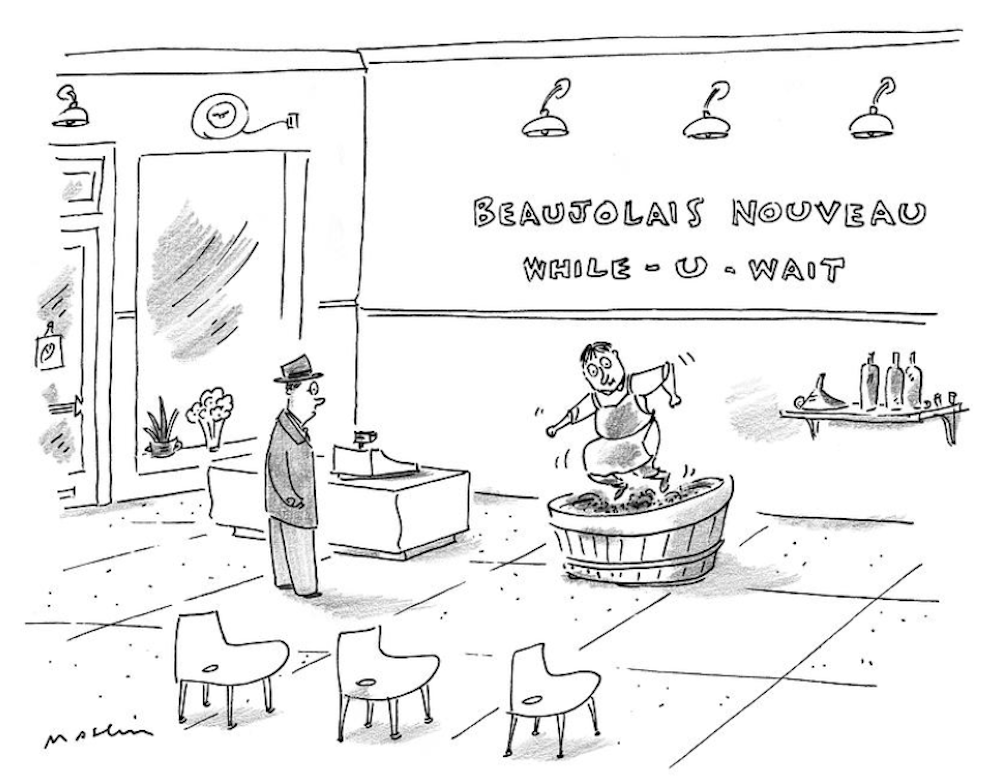
At its peak in 2010, 35 million bottles of the wine were dumped into the market. Some 7.5 million bottles were sold in French supermarkets and 15.5 million were exported mainly to Japan, Germany, Canada, and the United States. I am doubtful that it has grown from that popularity.
I say, good riddance to Beaujolais Nouveau. I was never really a fan of the wines, other than having a soft spot for frivolity and hype (again, I was part of the problem and really just trying to sell newspapers) of it all. Even when the category started expanding beyond Beaujolais with other countries (including Niagara) jumping on the bandwagon, it was probably doing more harm to the very grape, Gamay, then helping to promote it. I’m a fan of Gamay, but not the early picked, carbonic macerated, fresh Gamay rushed into bottles and down our throats in three short weeks.
Beaujolais Nouveau turned me off all the wines of that region for years and it would be quite a while before I would discover the true nature of the region and the classic cru Gamays made in the vineyards of Beaujolais.
Beaujolais covers a vast area, from the south of Mâcon to north of Lyon, accounting for 14,500 hectares of vines claimed in the 12 AOCs, practically all planted with Gamay (97%). The regional AOCs are generally located in the southern part of the vineyard, while the communal AOCs (Beaujolais crus) are in the north. These are soulful wines not built on substance, but rather finesse and flare, and wonderful food wines.
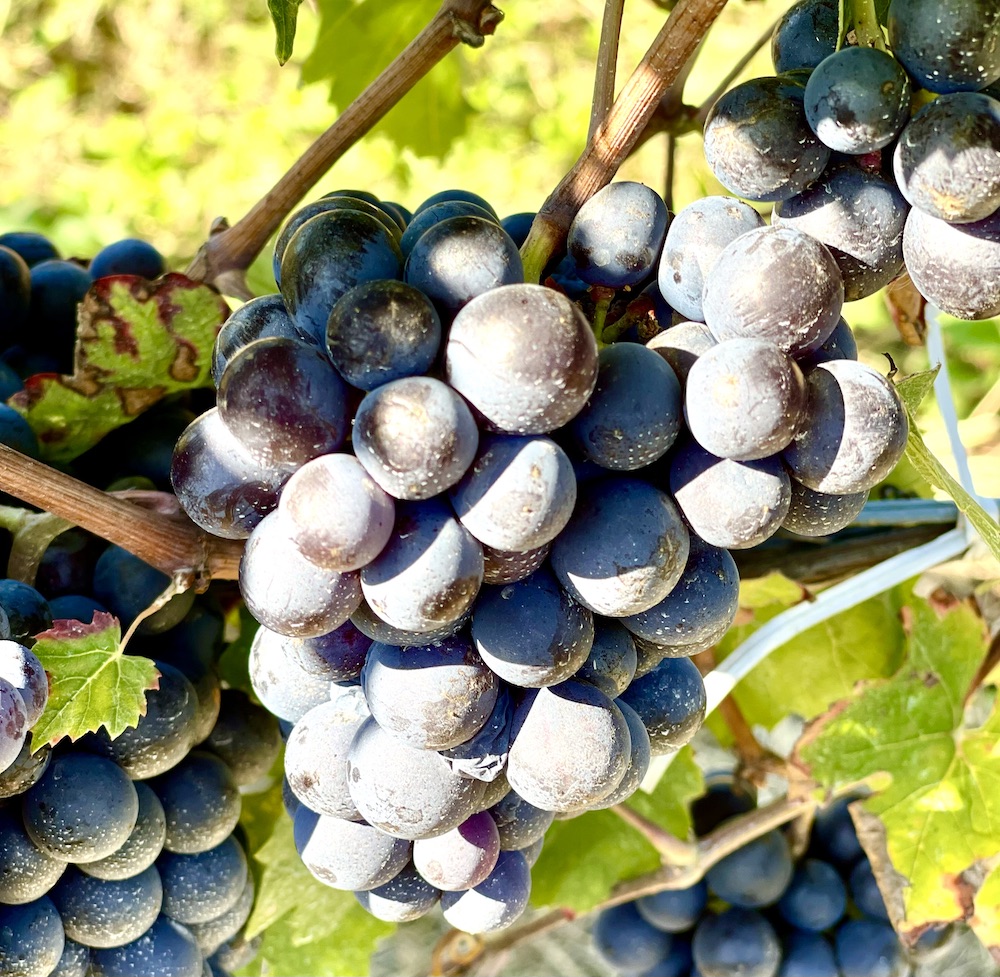
And it just so happens, Niagara and Ontario provide the perfect terroir and growing conditions for Gamay to succeed. Top vintners are turning their full attention to this loveable grape and are now making a range of styles and terroir-specific bottlings from tiny microclimates that are just beginning to scratch the surface.
Perhaps it is time to celebrate Gamay as it should be celebrated; not as a flight of fancy but rather as a serious wine that can have broad shoulders as well as gulpability in the hands of the right winemakers.
Maybe it’s time to flip the script on the marketing material used by the Beaujolais Nouveau producers. Instead of “It’s Beaujolais Nouveau time” how about “It’s Gamay Noir time.” Now that’s something that has a bright future.
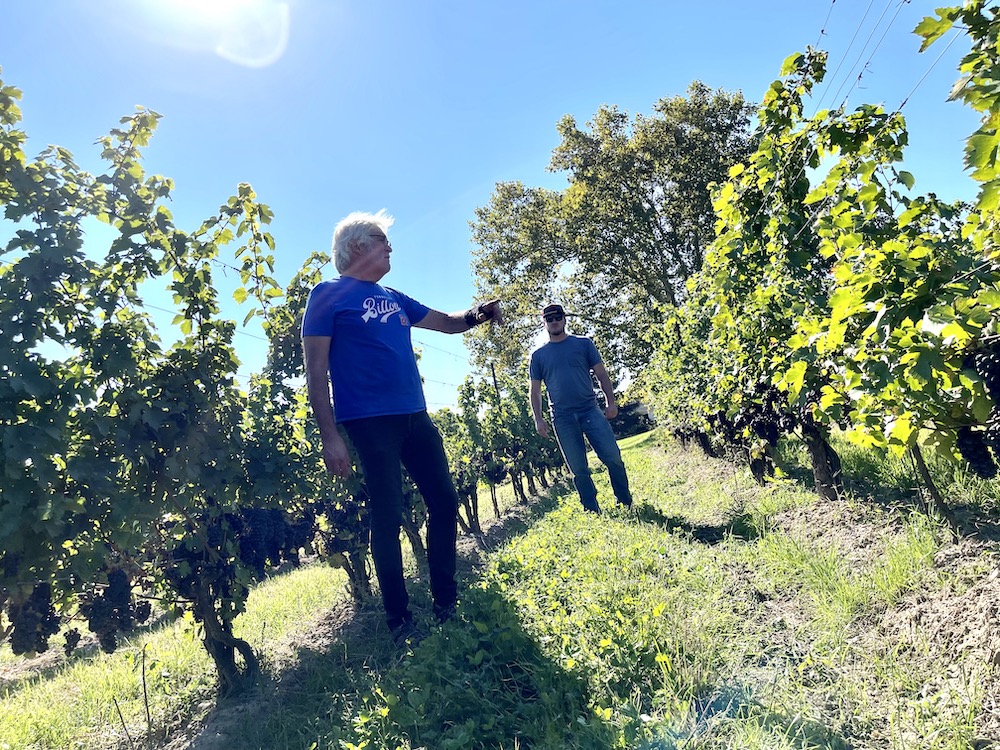
Gamay has caught on quickly in Niagara with many top wineries establishing a solid lineup of personable examples. Malivoire was one of the first to produce multiple expressions of this grape and, more recently, Thomas Bachelder has sped to the forefront of the Gamay revolution with his annual spring La Violette release that this year included eight different Gamays — one a Villages, one is a Gamay-Pinot Noir blend done in the Passetoutgrain-style and the others all single-vineyard expressions from the Bench and Niagara-on-the-Lake.
“I’m trying to reveal terroir, not win points,” Bachelder told Wines in Niagara last spring. What he means by that statement is that there is no point in chasing the cru Beaujolais style. Yes, one can look to techniques that work there but the soil in the vineyards, that granite, just doesn’t exist in Niagara. Bachelder wants you to not only drink cru Beaujolais but also villages level Beaujolais (where granite plays no role). And, more importantly, come to appreciate what Niagara winemakers are accomplishing from the quality Gamay vineyards in Niagara and the techniques employed here. They are killing it, and it seems to reach new levels with each vintage that passes.
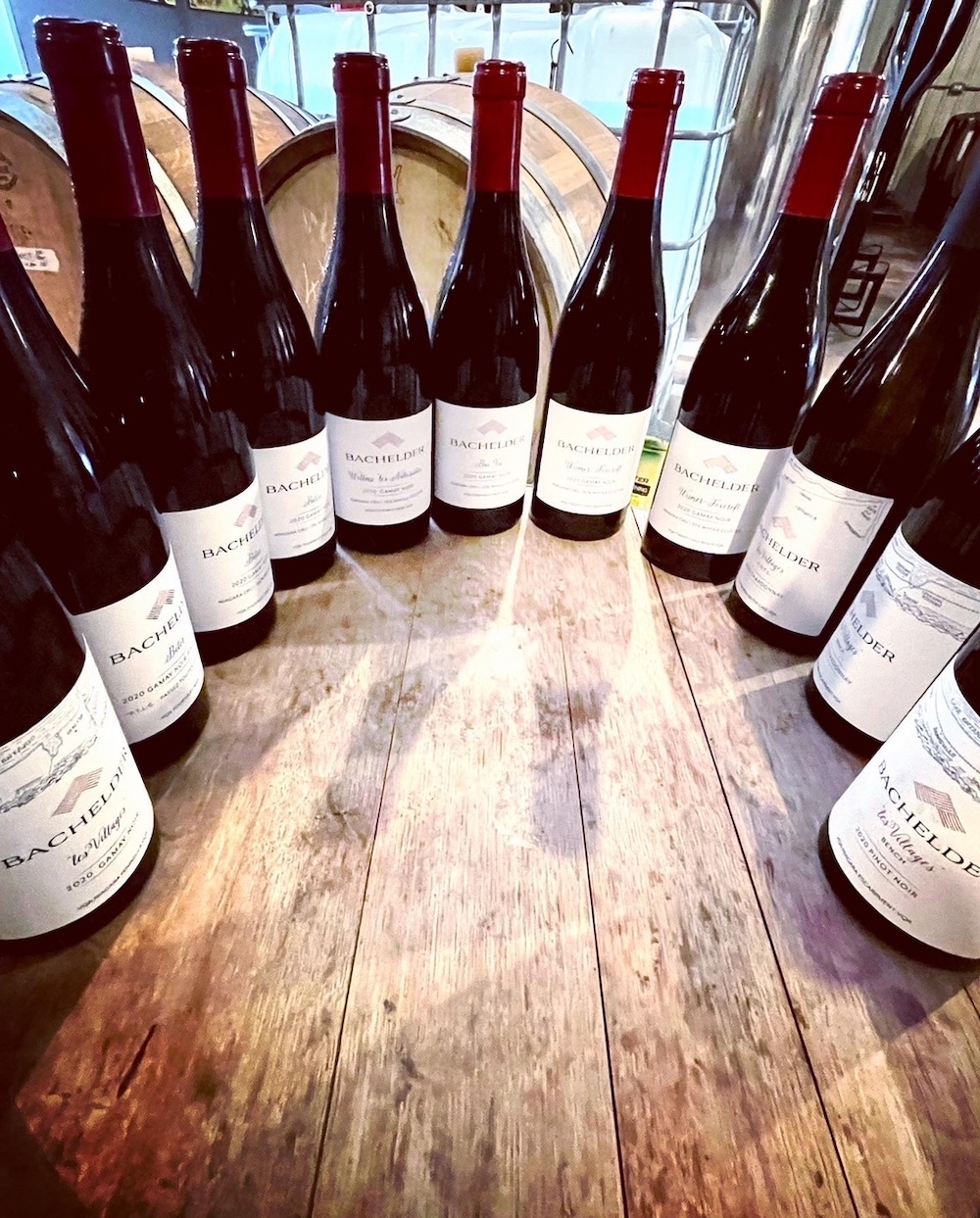
Bachelder freely admits he is just beginning his pilgrimage on the road to Gamay. “Sure, Mary (Delaney-Bachelder, partner and wife) and I have made terroir Pinot for much of our adult lives, but we have also fully embraced Gamay Noir,” he says. “We don’t know exactly where these wines are going … we have to lead them on their way, but, like you, we are here for the shared journey, the journey of these children of Gamay, of our children of Niagara.”
He points out that no one wants to make Gamay in their own country while constantly referring to Beaujolais. “But Beaujolais came first, and, as such merits some serious consideration when your heart finds that it turns toward Gamay Noir,” he adds.
You can’t replicate it; you can only learn from it and make expressions that reflect where you grow the grapes. And all of that takes time, trial and error and patience.
Roundup of delicious Niagara Gamays
I’ve gathered up a selection of 18 Niagara Gamays — some oaked, some not, some sparkling and some rosés — tasted and reviewed in 2022 (except one new review from Chateau des Charmes). So, if you are sad to see the shelves devoid of Beaujolais Nouveau this Thursday, no need to fret. Grab one of these in their stead and discover a whole new world of deliciousness. Our reviews are presented here in alphabetical order.
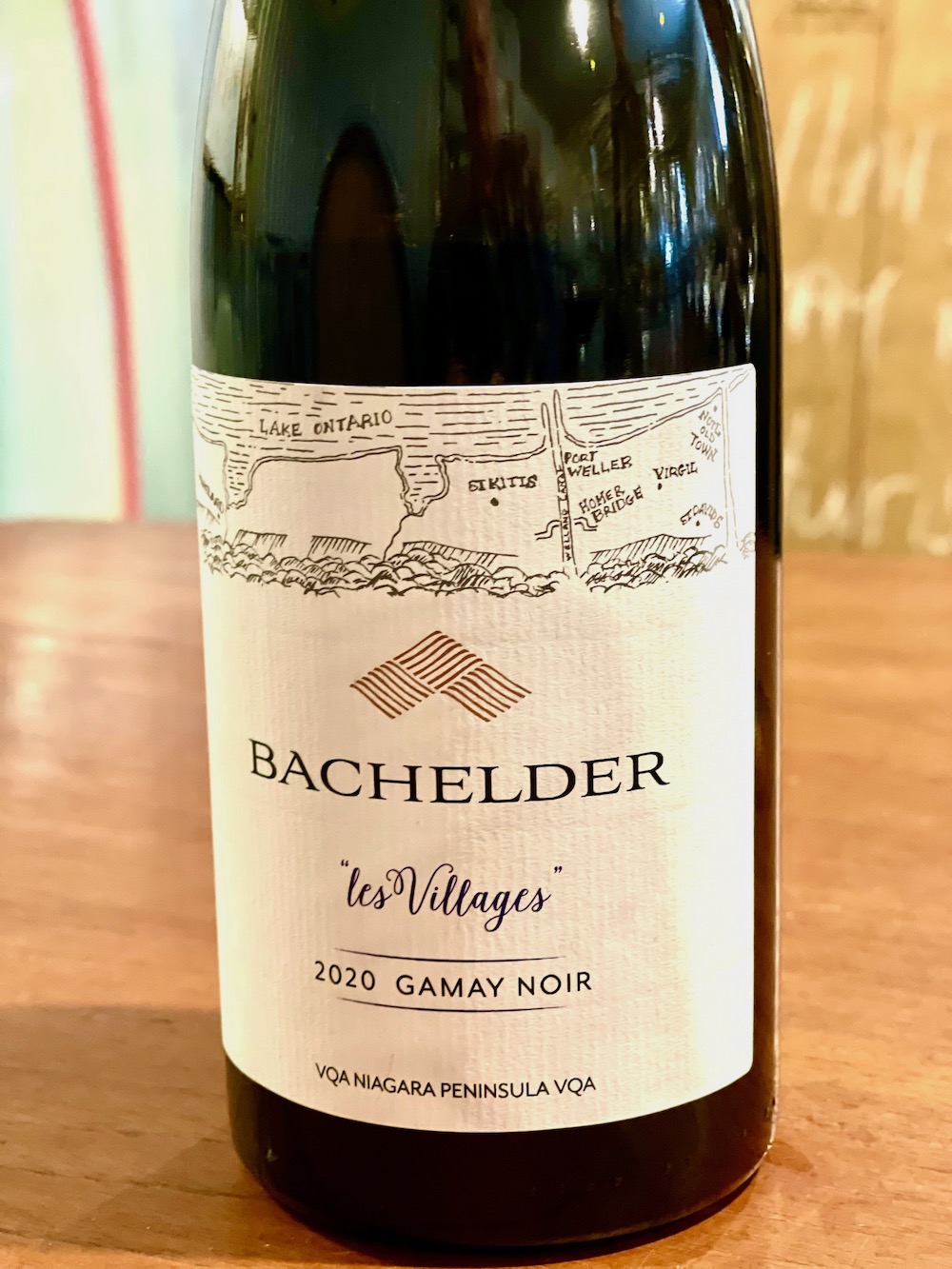
Bachelder les Villages Gamay Noir 2020 ($26, 90 points) — Even at this level, Bachelder wants consumers to get a taste of what he commonly refers to as “cru” level Gamay that is carefully curated from his key single vineyards in Niagara-on-the-Lake and the Bench. The goal is to create an expression of the terroir from all of Niagara that combines “the deep ripe fruit and silky tannins of Niagara-on-the-Lake with the delicate perfume and limestone angularity of the best Bench vineyard fruit,” he says. The 2020 vintage brings a richness and plumpness to the fruit, and it shows on the nose here with a ripe and succulent array of cherry-raspberry berries, plums, subtle spice notes, earth, and bramble. Those ripe red fruits are tempered somewhat by vibrant acidity giving lift to red berries and plums with added earthiness and savoury notes. Can cellar 3+ years. It’s sourced from Wismer-Foxcroft. Bai Xu, Bator, and Willms vineyards.
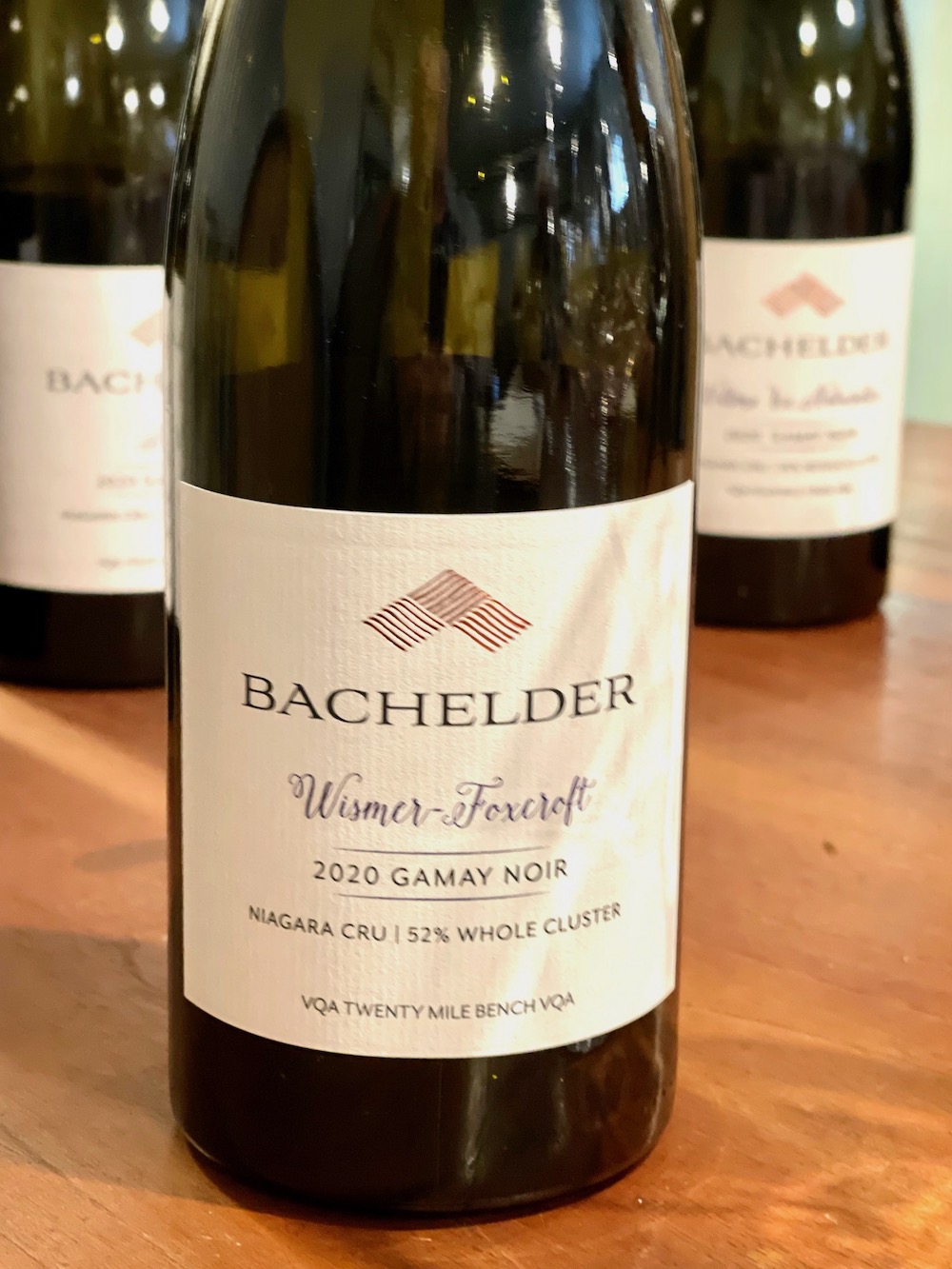
Bachelder Wismer-Foxcroft 52% Whole Cluster Gamay Noir 2020 ($32, 94 points) — This wine, vinified with 52% whole grape clusters, is so beautiful, so soulful that it stands on the doorstep of defining what Gamay can be in Niagara. There are a handful of Gamays made in the region that approach this greatness and there are more to come, which is why so many are excited about the future of this grape. The dark cherries, field raspberries and plums are persistent on the nose and joined by irony/bloody minerality, fresh turned earth and some integrated spice notes. The abundance of red berries dance lightly on the palate and shows complexity and structure with complementing anise, earth, polished tannins and spice that all work in perfect harmony through a long, joyous and lifted finish. A really fine Gamay that will improve 5+ years.
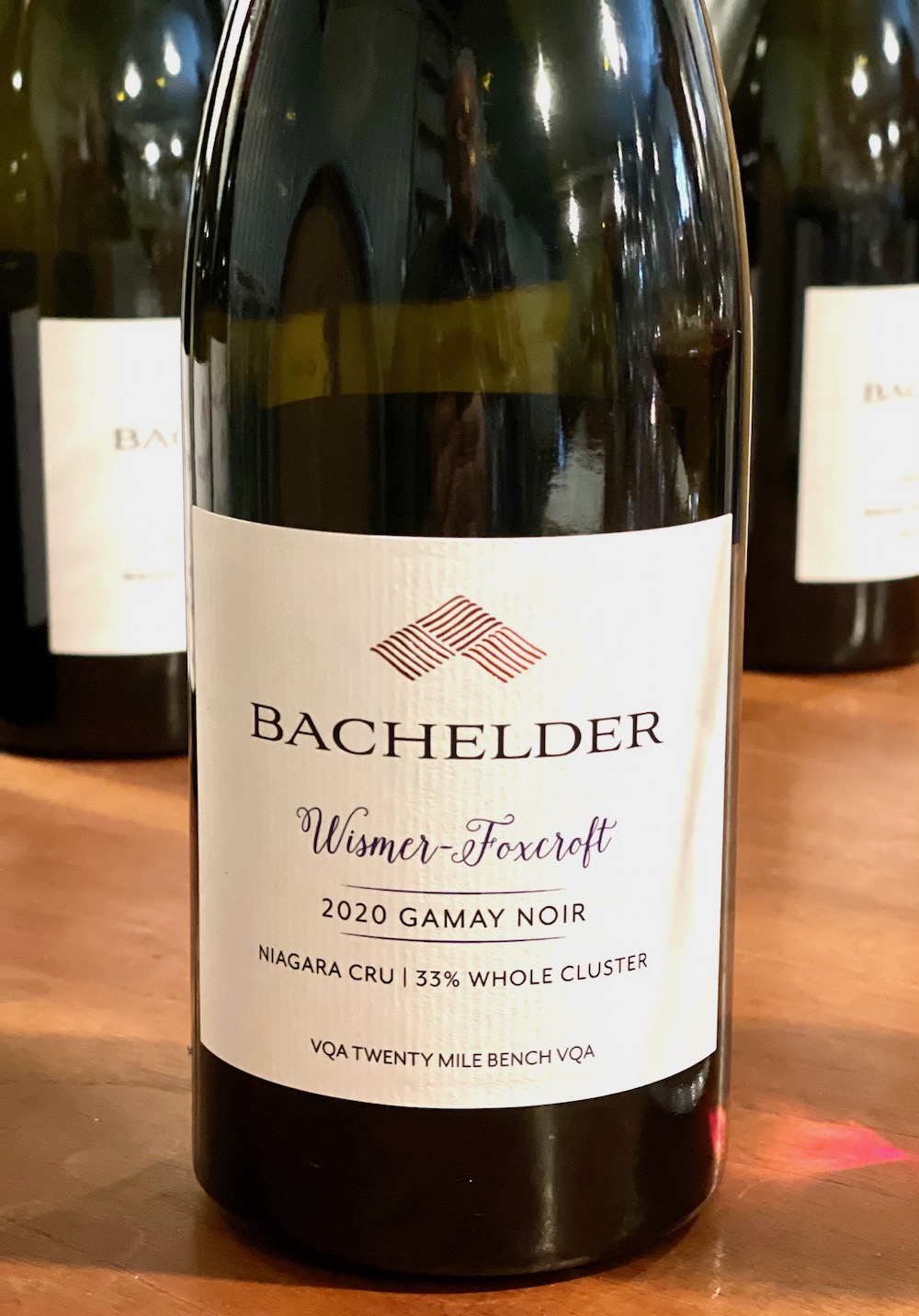
Bachelder Wismer-Foxcroft 33% Whole Cluster Gamay Noir 2020 ($32, 93 points) — Bachelder feels this wine, vinified with 33% whole grape clusters, is the finer, more closed, and more structured (for ageability) of the two Foxcroft “crus.” If ever there was proof that “beauty is in the eye of the beholder,” he says, “the polemic over Foxcroft 52% Whole Cluster vs. Foxcroft 33% Whole Cluster is undoubtedly just that. It is perhaps more elegant on the nose than the 52% version with integrated fruit, pretty red berries, lifted floral notes, some subtle meatiness and savoury accents. I found this to be the more immediately accessible of the two out of the gate with a basket of rich raspberries, dark cherries, plums, and savoury/meaty notes that all lead to a long, juicy finish. Cellar 5+ years.
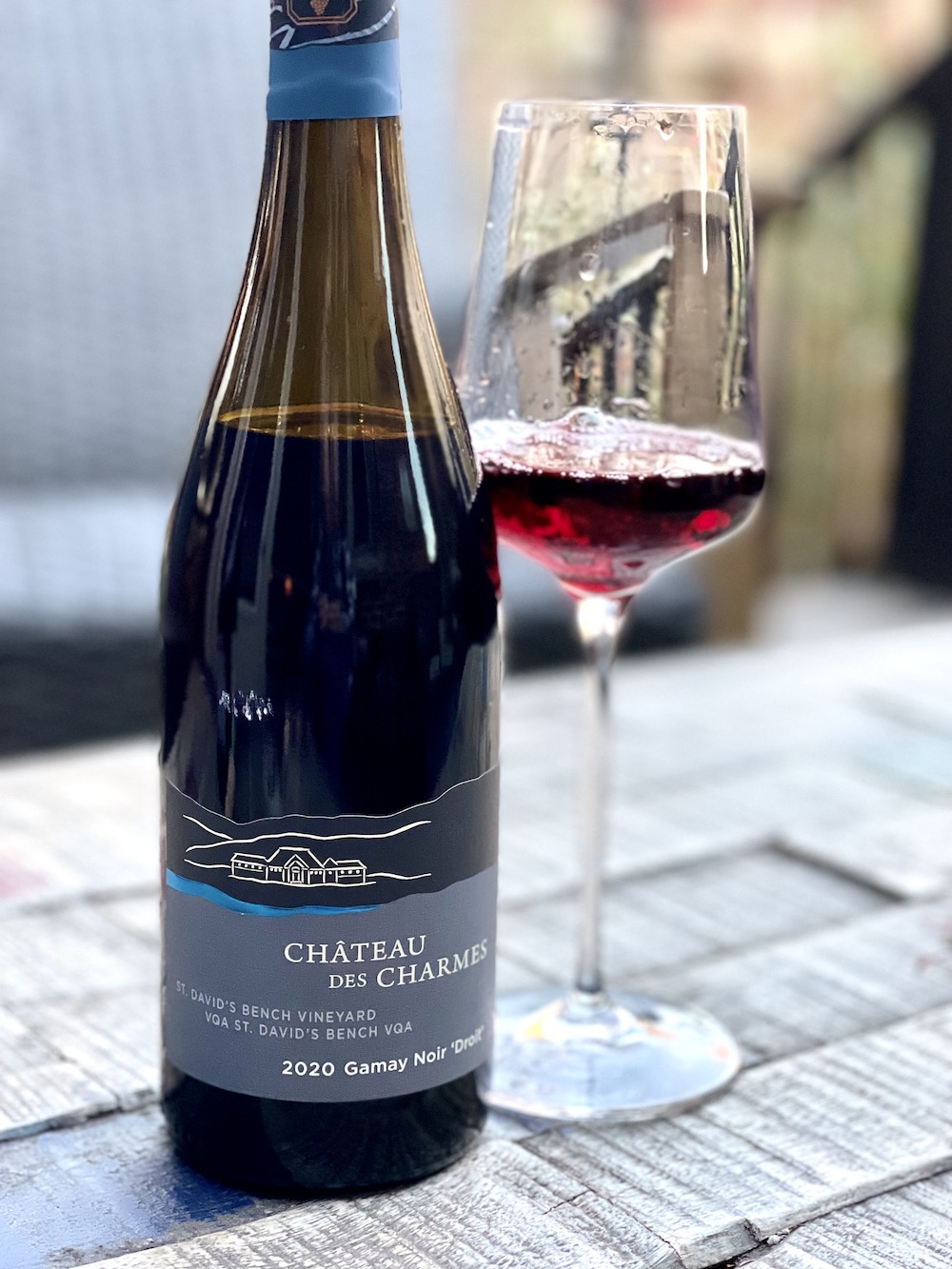
Chateau de Charmes Gamay Droit 2020 ($22, new review, 90 points) — This estate, single-vineyard Gamay Droit is Canada’s first native vinifera vine, born in the St. David’s Bench Vineyard. In the early 1980s, Paul Bosc was doing routine inspections in the vineyard and noticed a single Gamay Noir vine growing straight up and taller than the others in the block. It was tested and determined to be a separate variety from the Gamay family. No oak is used to finish this unique expression. The smoky nose reveals an earthy/savoury side with macerated cherries, brambly raspberries and plums. The ripe, red berries shine on the palate with a pinch of smoky/meaty notes and mouth-watering acidity on the finish.
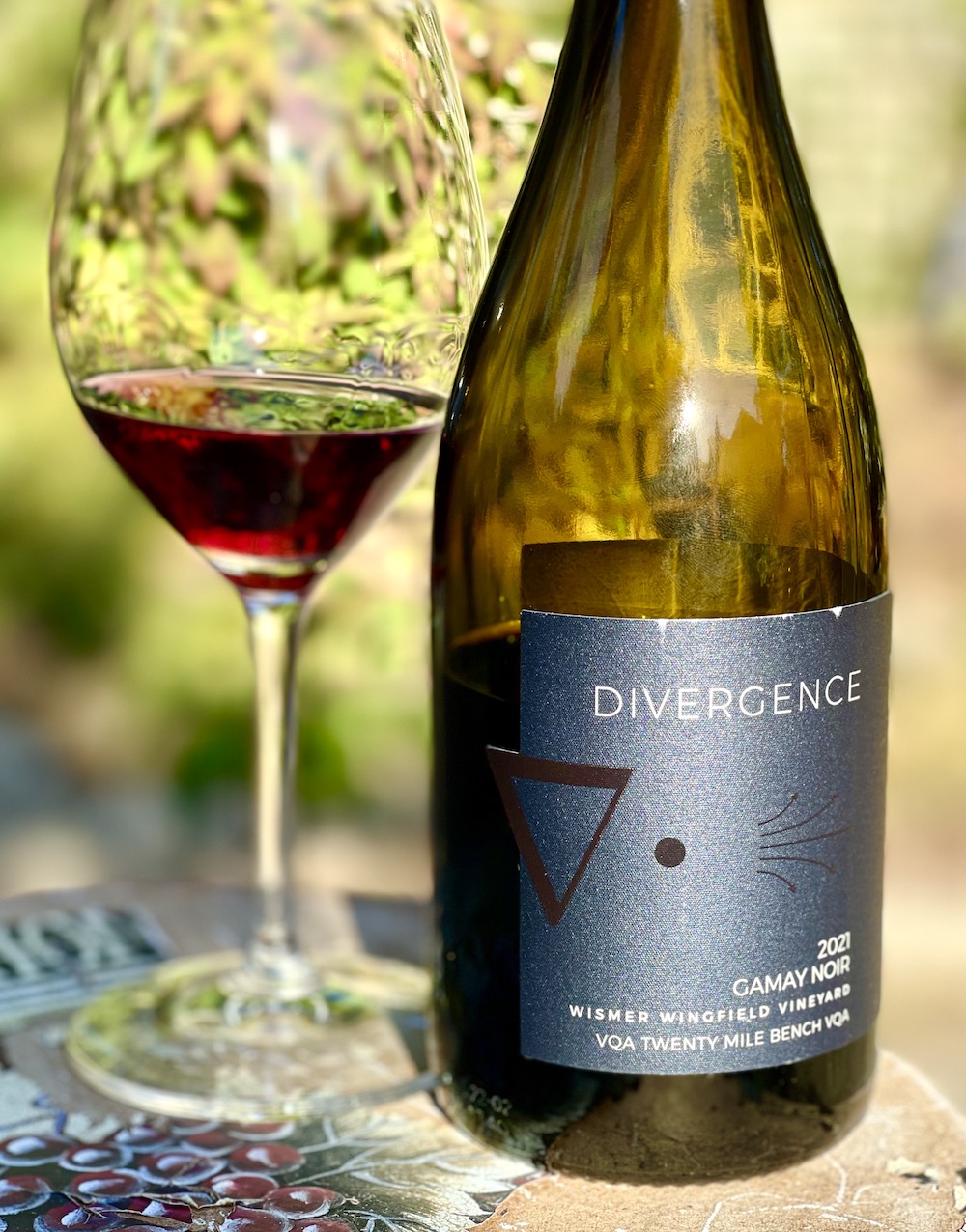
Divergence Gamay Noir 2021 ($28, 91 points) — This Gamay is sourced from the Wismer Wingfield Vineyard on the Twenty Mile Bench. It spends 14 days on the skins before being sent to older oak barrels for nine months of aging. It needs a decant, but after doing that and swirling vigorously the nose reveals plums, brambly black raspberries, macerated cherries, earthy notes and just a touch of spice. It’s smooth and textured on the palate with rich and savoury red berries, plums, anise, spices, and plenty of zip on the finish. If you can, cellar this a bit, say six months, before opening or decant if you can’t resist it now.
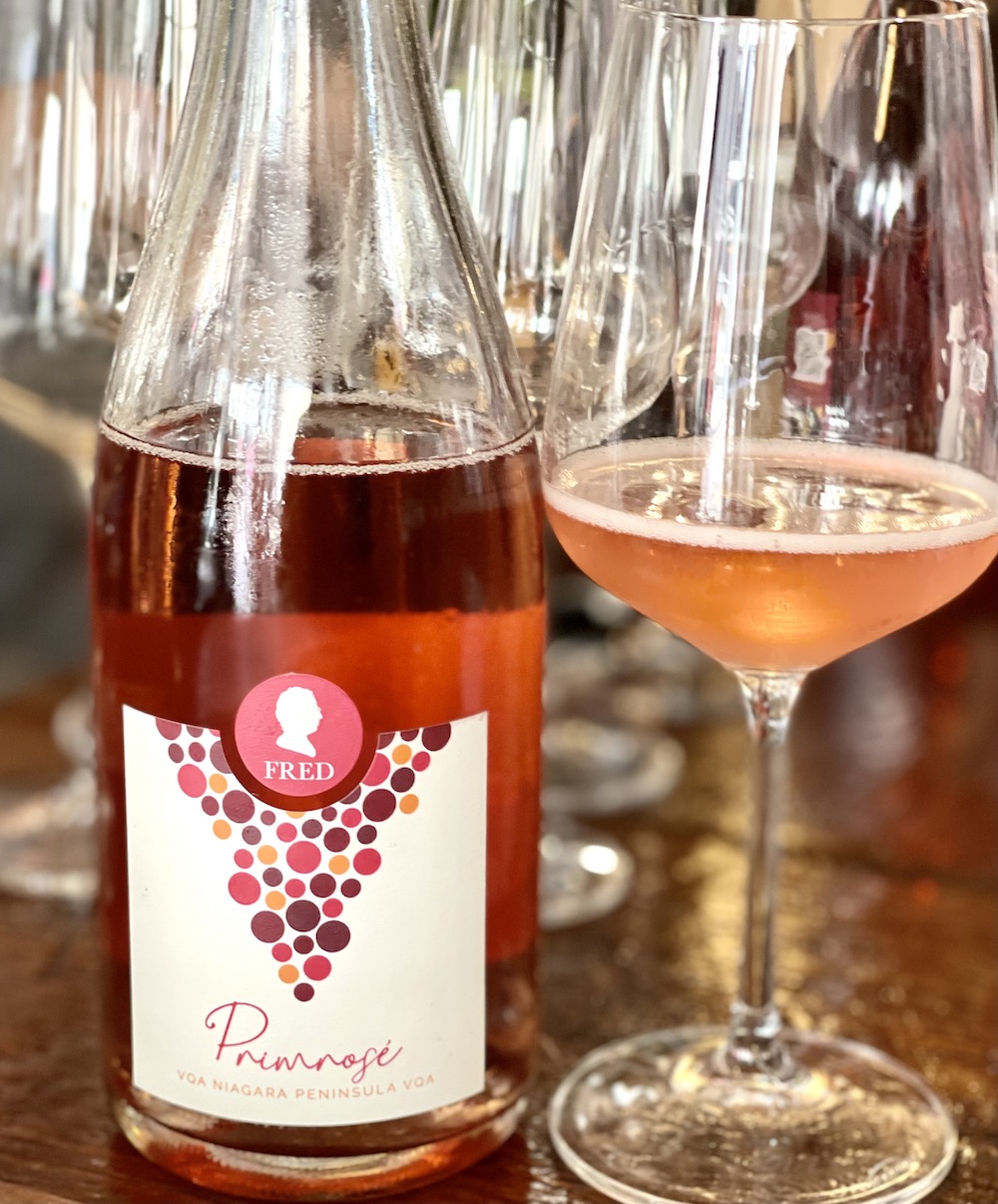
Fred Wines Primrose 2021 ($39, 92 points) — This is a 100% Gamay sparkling wine made in the charmat method from grapes sourced in the Vinemount Ridge sub-appellation. It has pronounced aromatics of ripe plums, wild raspberries, some subtle earthy notes, herbs, and a floral lift. It’s bright and lifted on the palate with juicy plums, raspberries and strawberries that straddle the line of tart and sweet with a freshening sturdy bubble and a clean, lifted finish. A joy to drink.
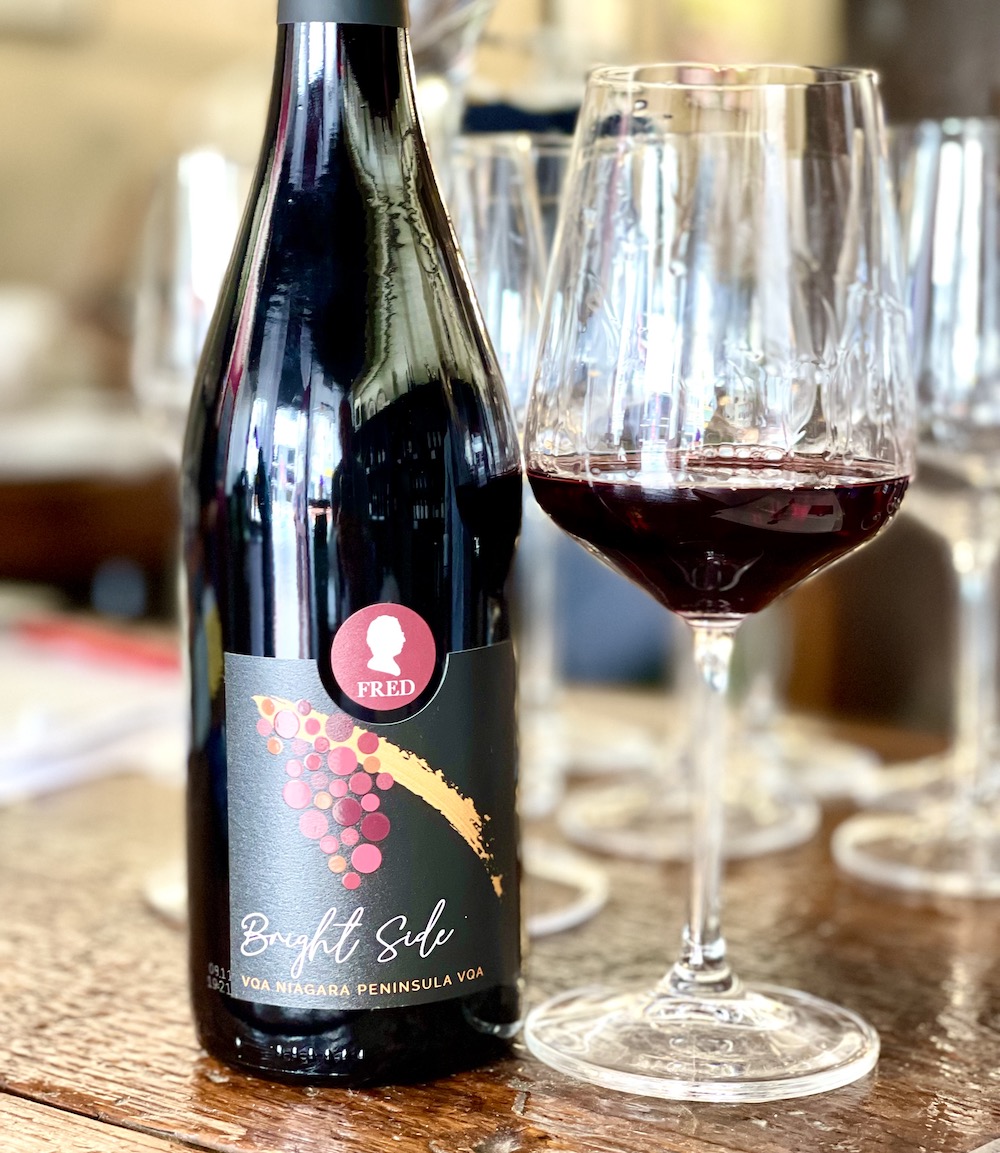
Fred Wines Bright Side Gamay Noir 2020 ($29, 90 points) — The Bright Side is a proprietary name that might not always be 100% Gamay in future bottlings. Di Profio calls it a lighter red with bright acidity and colour. The fruit is sourced from various sites in Niagara. The nose shows bright, but dense fruit with ripe red berries, red currants, herbs and a touch of bramble and spice. It’s juicy on the palate with lovely dark cherries, summer ripened strawberries and plums with a splash of pepper, herbs, and spice on a lifted finish.
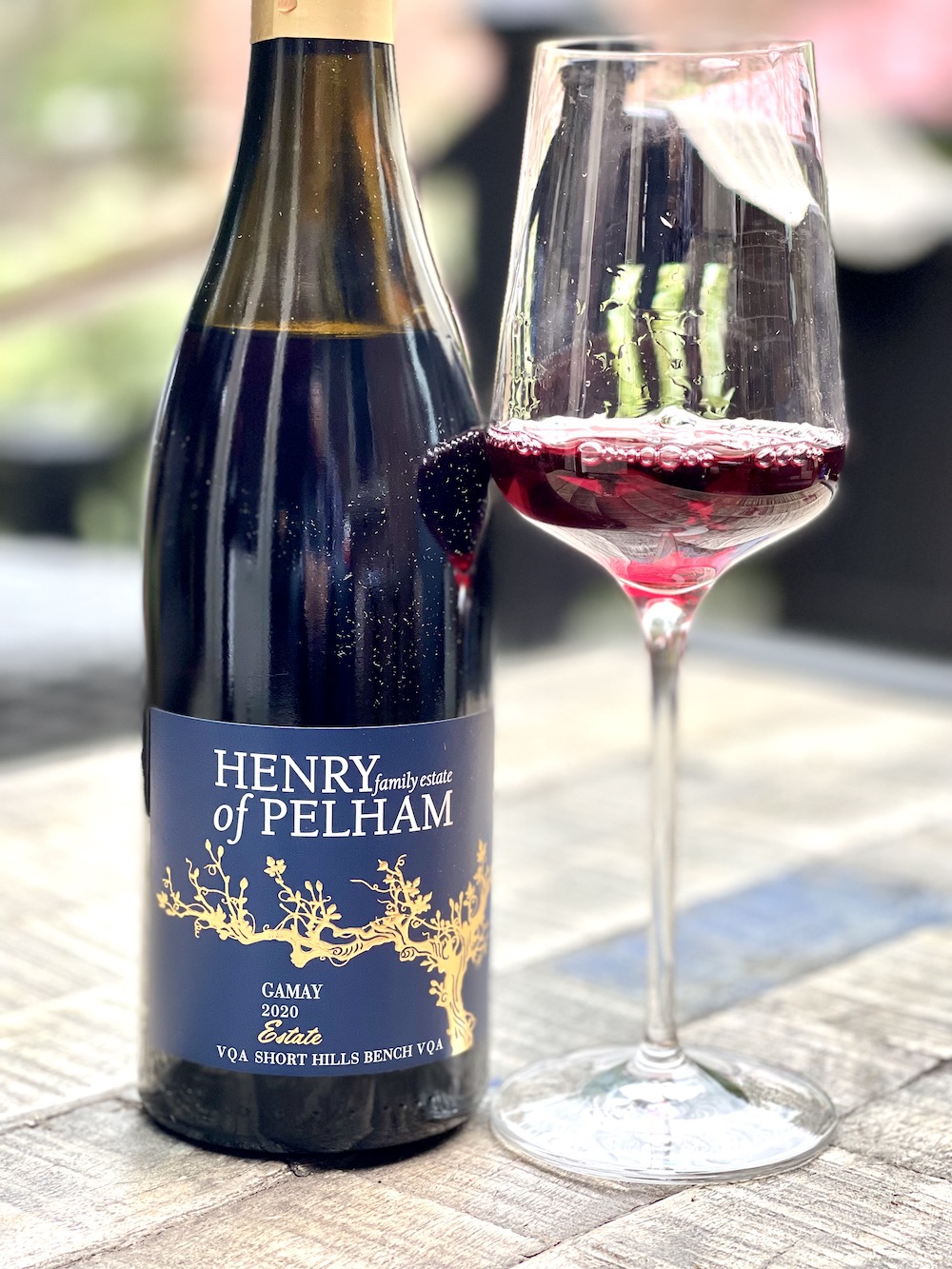
Henry of Pelham Smith & Smith Gamay 2020 ($22, 89 points) — The nose shows ripe wild blueberries, fresh raspberries, plums, cherry tart, and lightly toasted spice notes. It’s bold and sassy on the palate with darker berries, anise, pepper, and spice.
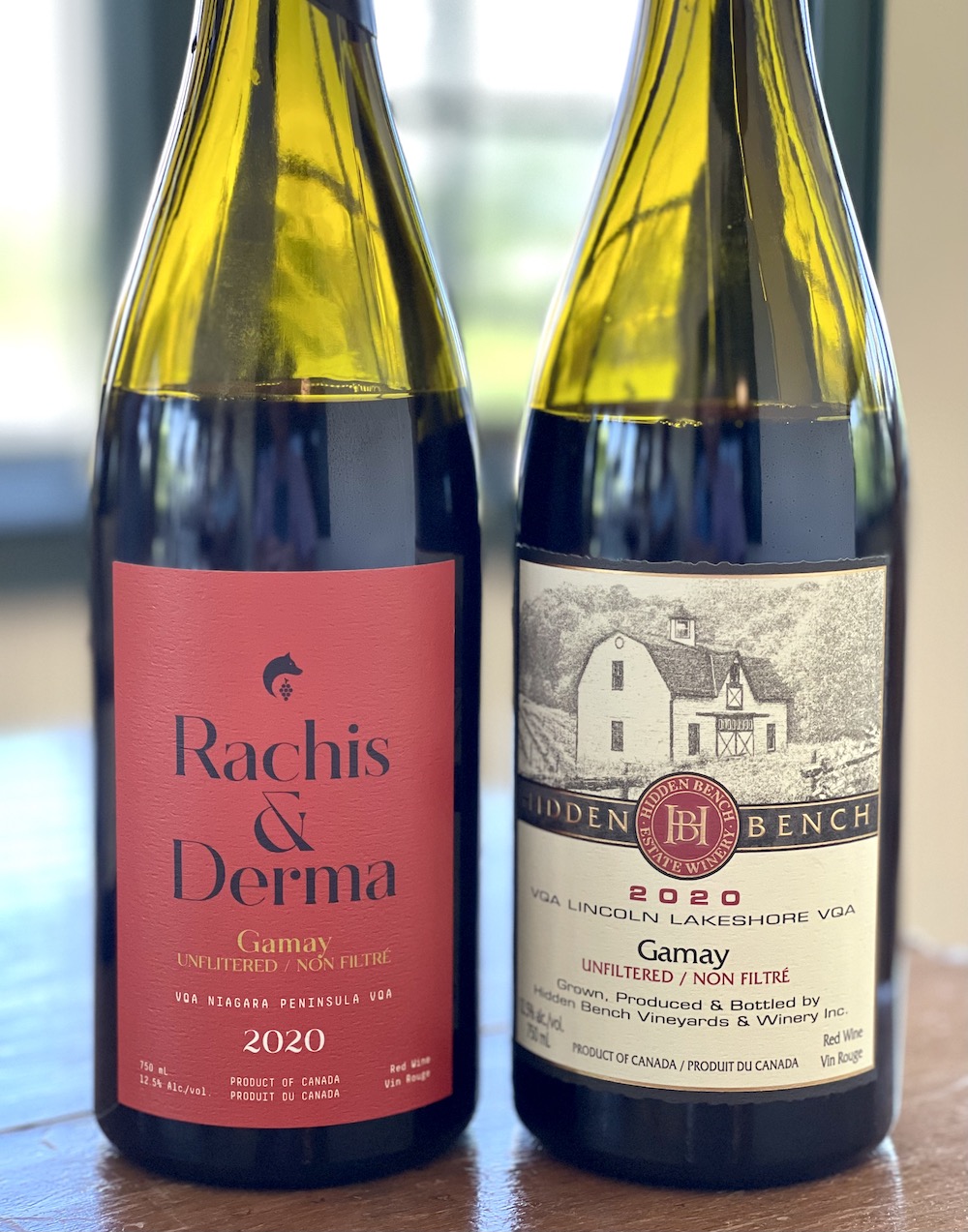
Hidden Bench Rachis and Derma Gamay 2020 ($35, 90 points) — The Rachis & Derma label is reserved for Hidden Bench’s more radical line of natural wines. This Gamay, from a new estate vineyard in the Lincoln-Lakeshore appellation, spends six months in neutral oak and there are no additions of any kind, including sulphur, added to the wine. It has a jammy, super clean nose, with plums, black currants, kirsch, earth, raspberry puree, and pepper notes. The fine tannins add a bit structure to this wine on the palate with notes of raspberry patch, pepper, plums, and currants with a tangy, lifted finish. Proprietor Harald Thiel puts it succinctly: “It’s pretty %$*& tasty!”
Hidden Bench Gamay Noir 2020 ($30, 92 points) — From the more traditional side of winemaking, this similarly sourced Gamay is aged in French oak (14% new) for nine months. The nose is quite plummy with dark cherries, violets, forest berries and integrated spice notes. It’s juicy and dense on the palate with some structure and tannins that showcase the dark cherries, black raspberries, earthy/savoury notes, and spice on a fresh, finessed finish.
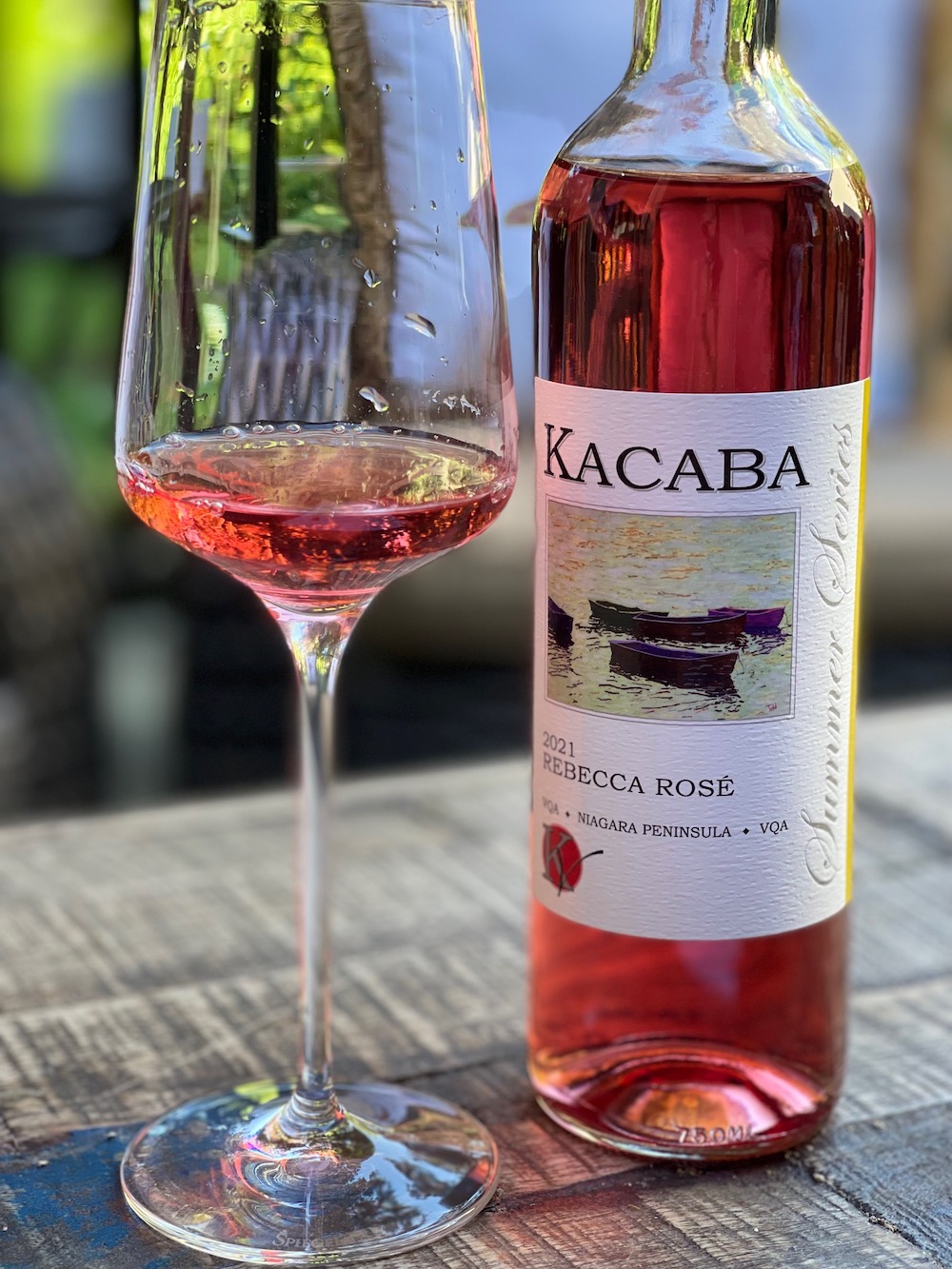
Kacaba Summer Series Rebecca Rosé 2021 ($20, 92 points) — This 100% Gamay rosé shows a bright magenta hue in the glass with a lively nose of summer watermelon, plums, strawberry tart, and candy floss. It’s juicy and ripe, but made in a bone-dry style, with a basket of strawberries, watermelon, subtle citrus, and cherries with a fresh, vibrant finish. Delicious rosé!
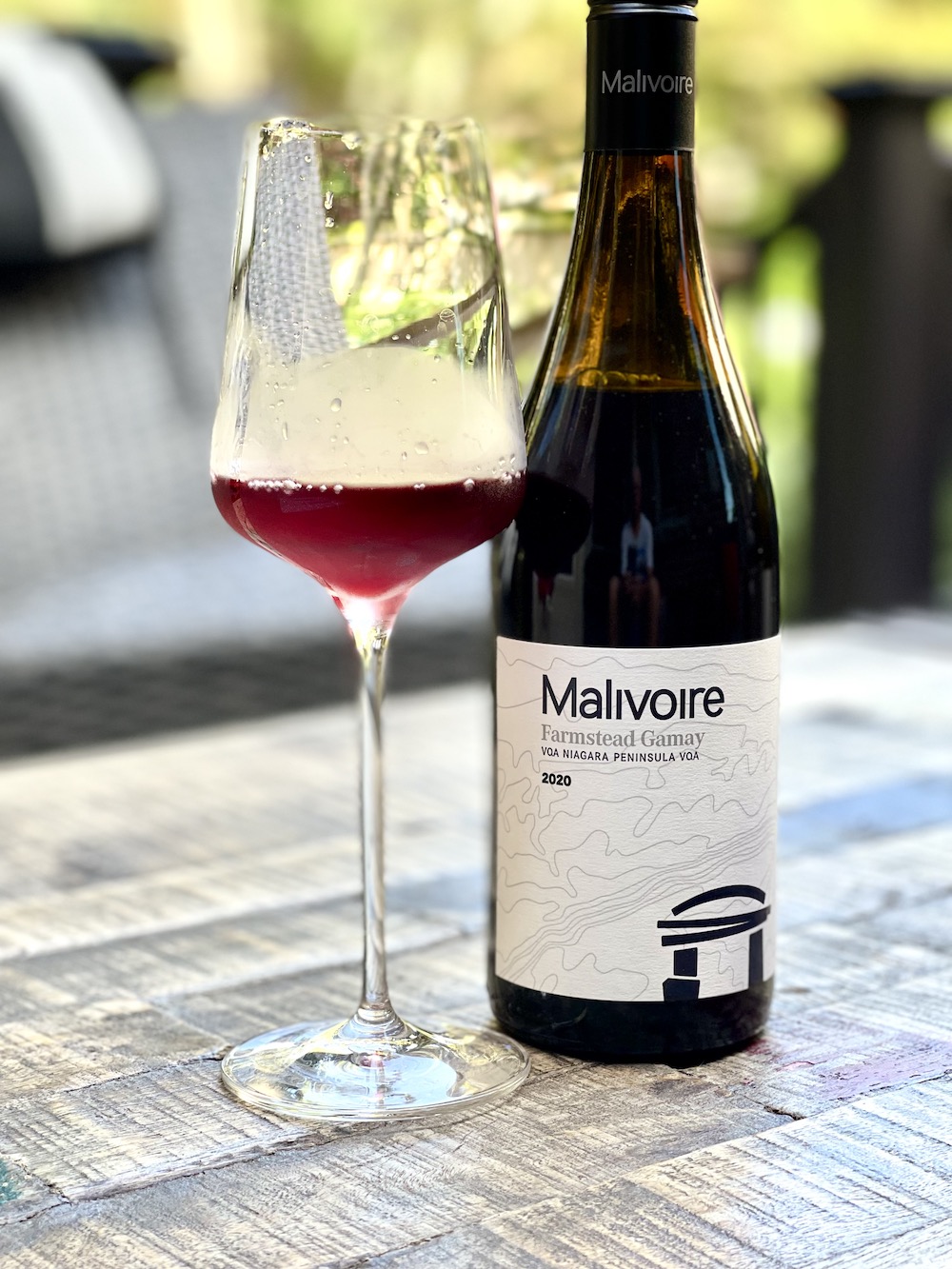
Malivoire Farmstead Gamay 2020 ($22, 91 points) — Most of the grapes were destemmed and crushed with a small amount crushed in whole clusters. While the greater share of the juice sent to stainless steel, 13% was treated in concrete tank. Following fermentation, two thirds was aged in stainless steel and the rest aged in neutral oak barrels. What a lovely, juicy Gamay with aromas of dark cherries, wild raspberries, strawberry tart, and Damson plums with just a hint of spice. The palate lights up with a rainbow of red berries, earth, subtle spice with just enough tannins to offer a dimension of complexity. The mouth-watering acidity kicks in on the finish. Great job here.
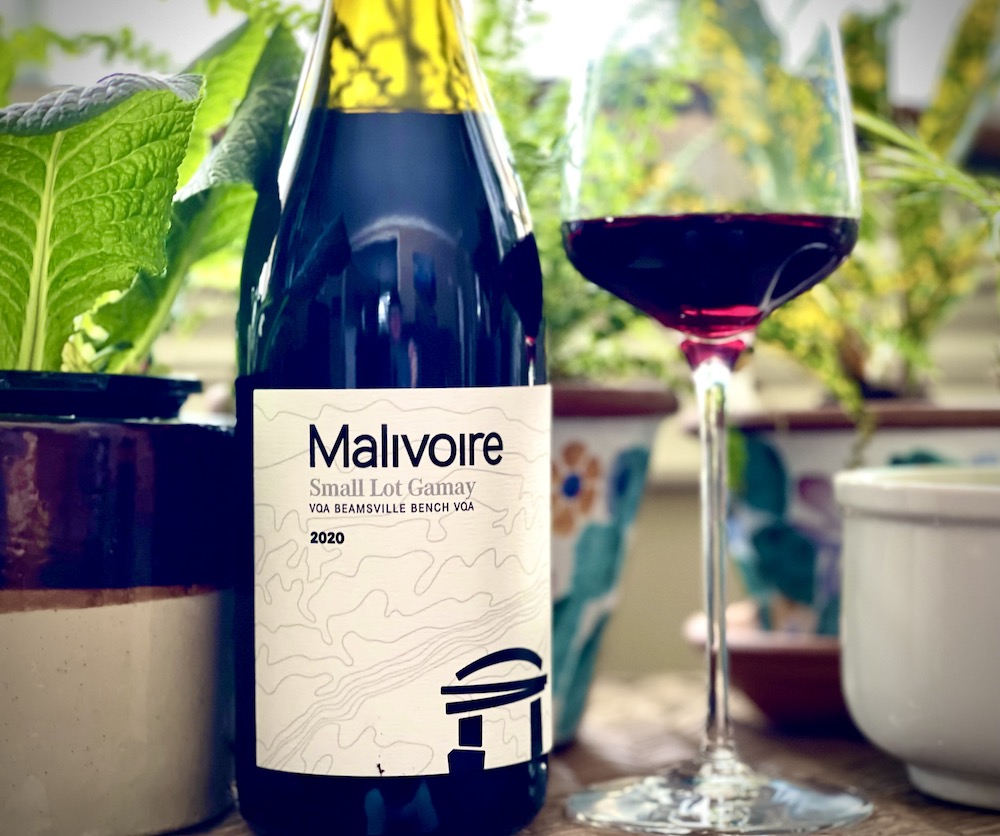
Malivoire Small Lot Gamay 2020 ($22, 92 points) — The estate grapes were divided into two lots to ferment in concrete (55%) and oak vats (45%). After fermentation and blending, 30% of the wine went to stainless steel, while the larger portion was aged in neutral oak barrels. It has a vivid, expressive nose of crunchy cranberries, savoury raspberries, tart cherries, ripe black cherries, subtle floral notes, and spice. It’s juicy on the palate with a lovely basket of red berries, plums, savoury spices, and pepper with a bright, finessed flare on the finish.
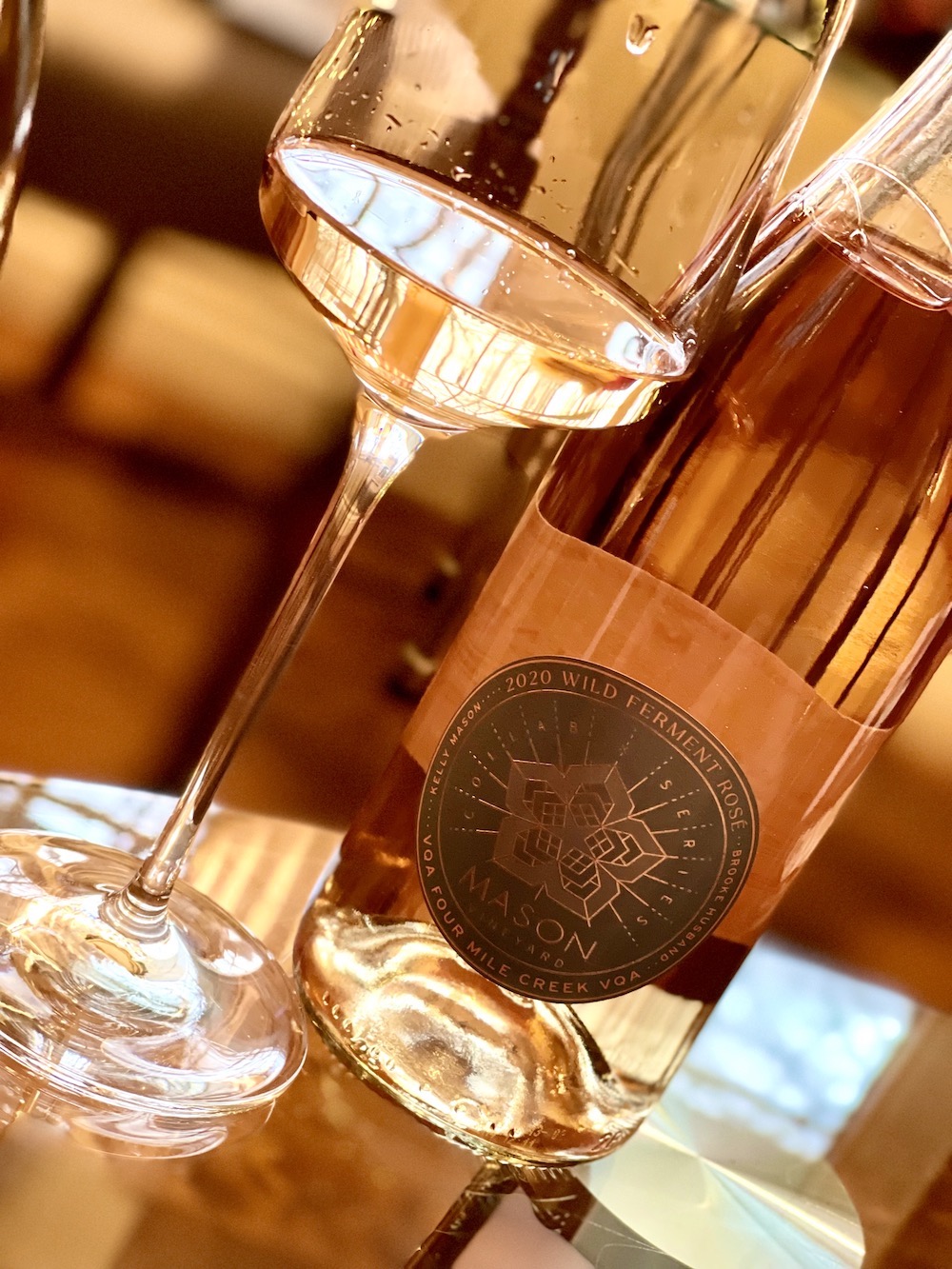
Mason Vineyard Wild Ferment Rosé 2020 ($20, 90 points) — This 100% Gamay rosé is sourced from the Willms Vineyards in the Four Mile Creek. The Gamay was whole berry pressed at low pressure then the juice was moved to a tank that was lined with whole cluster Gamay. Primary and secondary fermentation were wild and the whole clusters were kept in until the end of ferment. It shows a pretty salmon colour in the glass with a nose of strawberry shortcake, black cherries, herbs, brambly raspberries and subtle citrus zest. It’s lip-smackingly fresh and dry on the palate with a rich texture, ripe red berries, savoury herbs, a touch of earthiness and vibrant through the juicy finish.
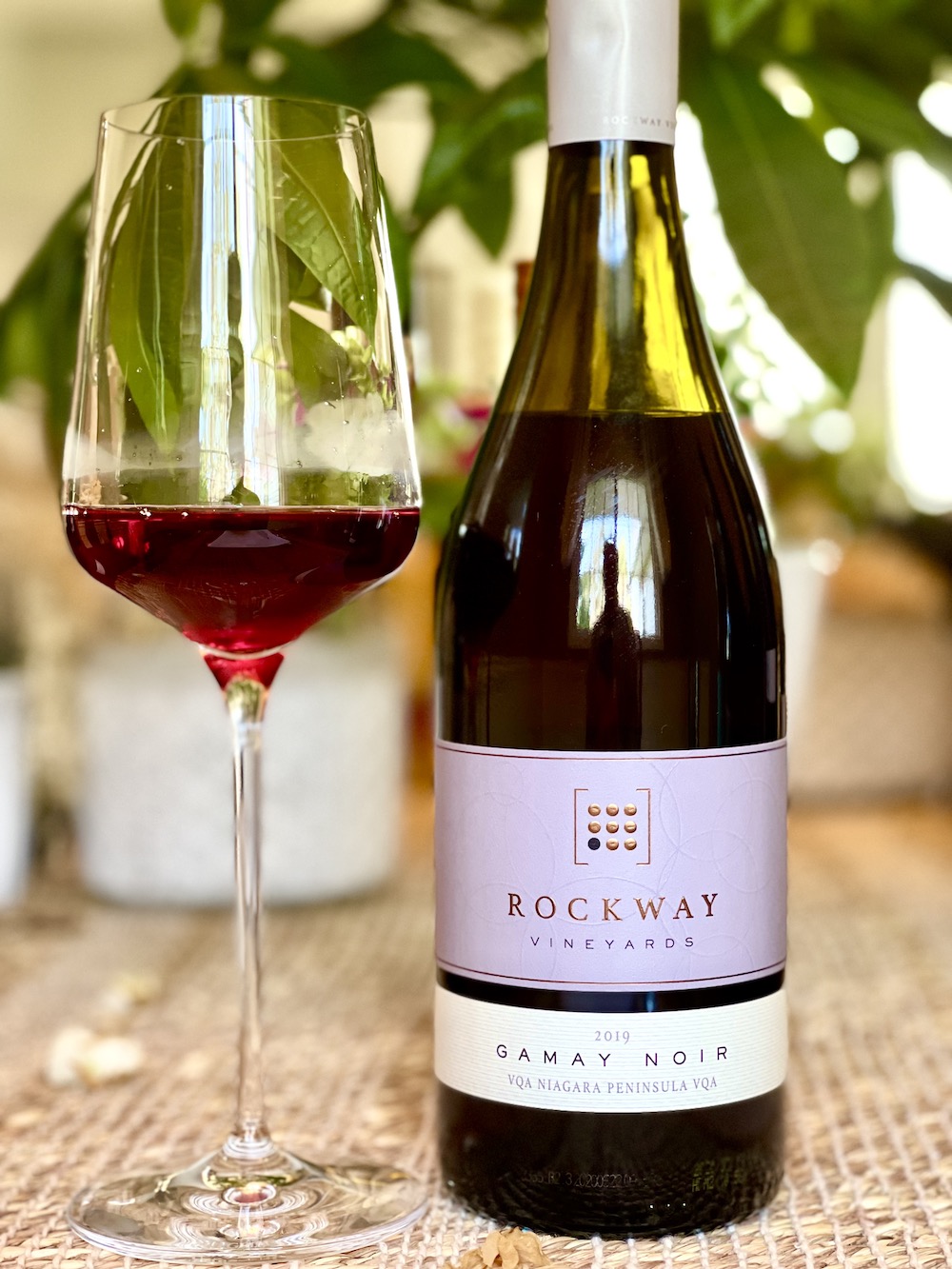
Rockway Gamay Noir 2019 ($19, 89 points) — A lighter-bodied and joyous Gamay with an inviting nose of wild raspberries, plums, black cherries, and subtle earthy/spicy notes. It packs a punch on the palate with its fruit-packed array or red berries on a smooth texture with nuanced spice note and a mouth-watering finish.
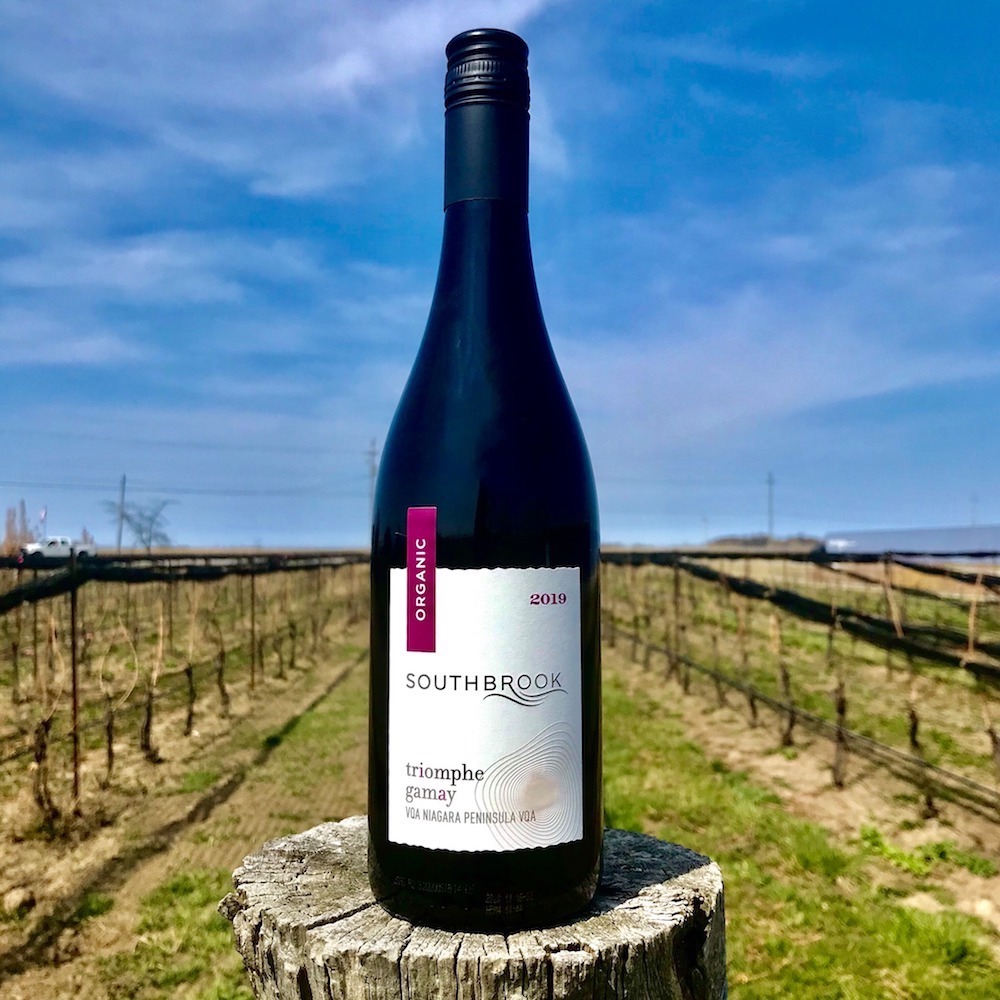
Southbrook Triomphe Gamay 2019 ($28, 90 points) — At this level of Gamay, winemaker Ann Sperling is thinking more in line with Beaujolais village: “A little lighter but really delicious to drink, maybe on the patio, refreshing and almost too easy to drink.” Up a level, she also makes another Gamay, a cru-like bottling more akin to north of Beaujolais where the grape originated, which is bigger and bolder. It has pure aromas of red berries, meadow flowers, plums and subtle savoury and spice notes. It’s clean and juicy on the palate red berries joined by a touch of anise, earth, muddled herbs, spice, and a fresh finish. Highly gulpable.
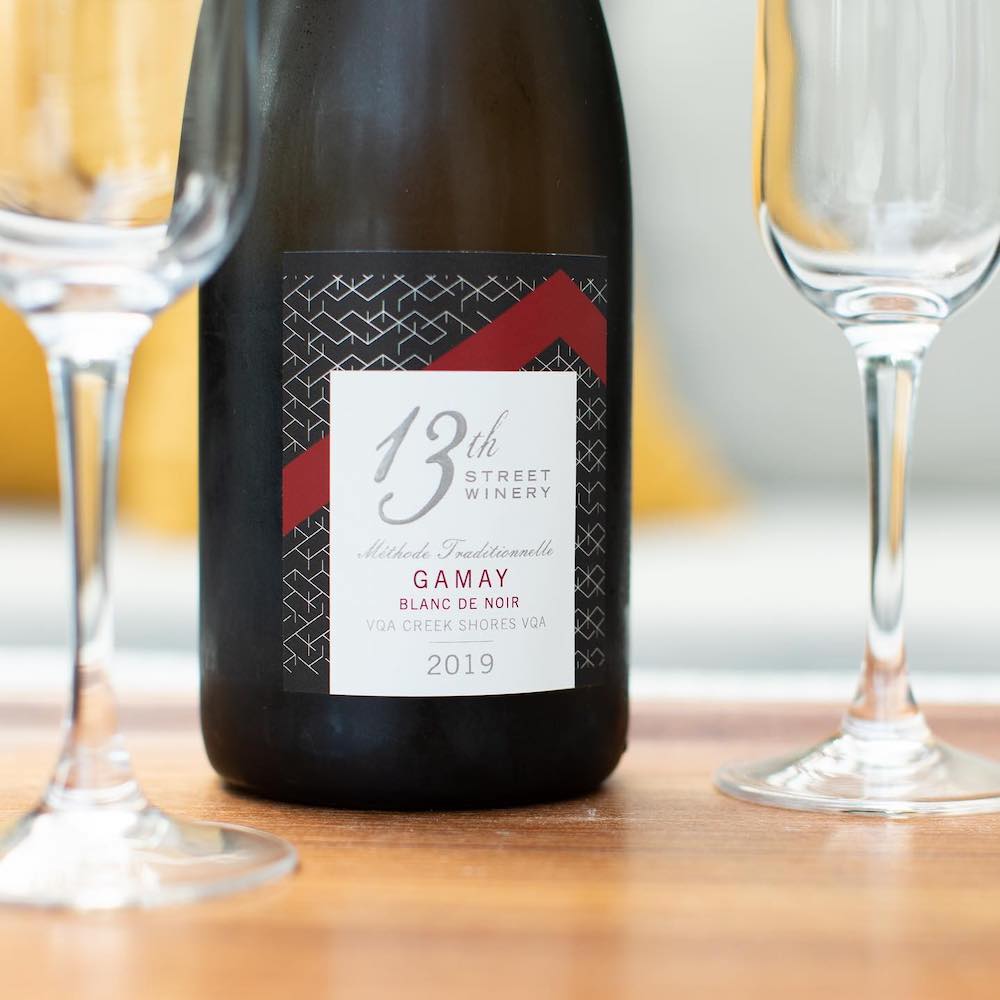
13th Street Blanc de Noir Gamay 2019 ($35, winery only, 92 points) — This is only the second iteration of this rare traditionally-made estate sparkling Gamay. I can’t think of another like this being made locally. The wine was aged sur lattes for 12 months before being disgorged and is another brut zero wine with no malo or oak and finished at 3 g/l of sugar. It has a vibrant, expressive nose of fresh red berries, s touch of plums, biscuit and minerality with a vigorous mousse. There’s tingling acidity on the palate then brambly raspberry notes, plums, a touch of citrus, smoke and saline minerality with vigour and finesse on the finish. A fun and very different style of bubbles.
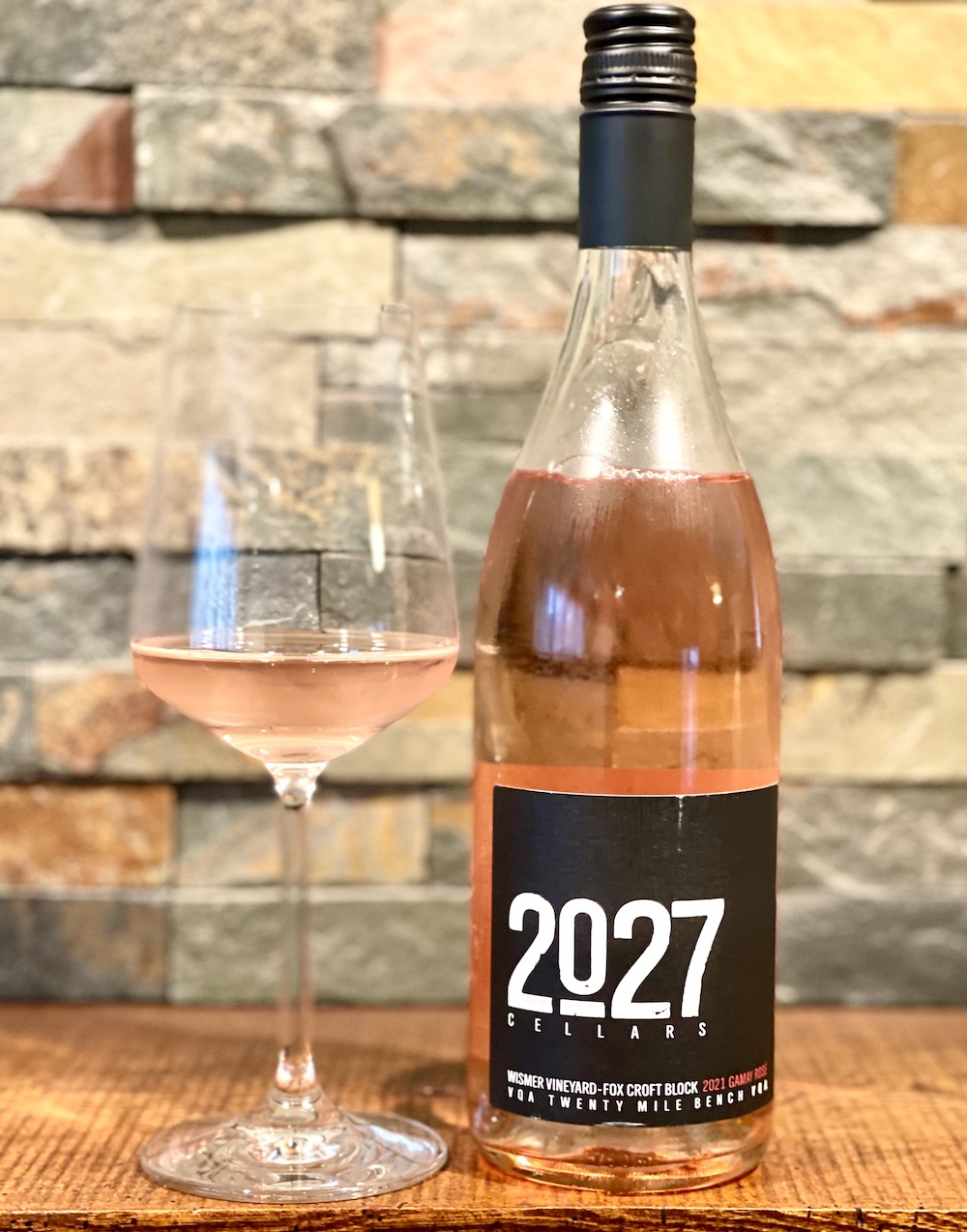
2027 Cellars Gamay Rosé 2021 ($22, 92 points) — This single-vineyard Wismer Vineyard — Foxcroft Block rosé from the Twenty Mile Bench shows a pale salmon colour in the glass and has a fragrant nose of wild raspberries, pretty, dark cherries, a touch of cassis and plums with swirling minerality. It has lovely texture on the palate with pure red berries, a squirt of citrus and darker berries with a fairly robust feel through the lifted finish. Wow rosé.






Comment here